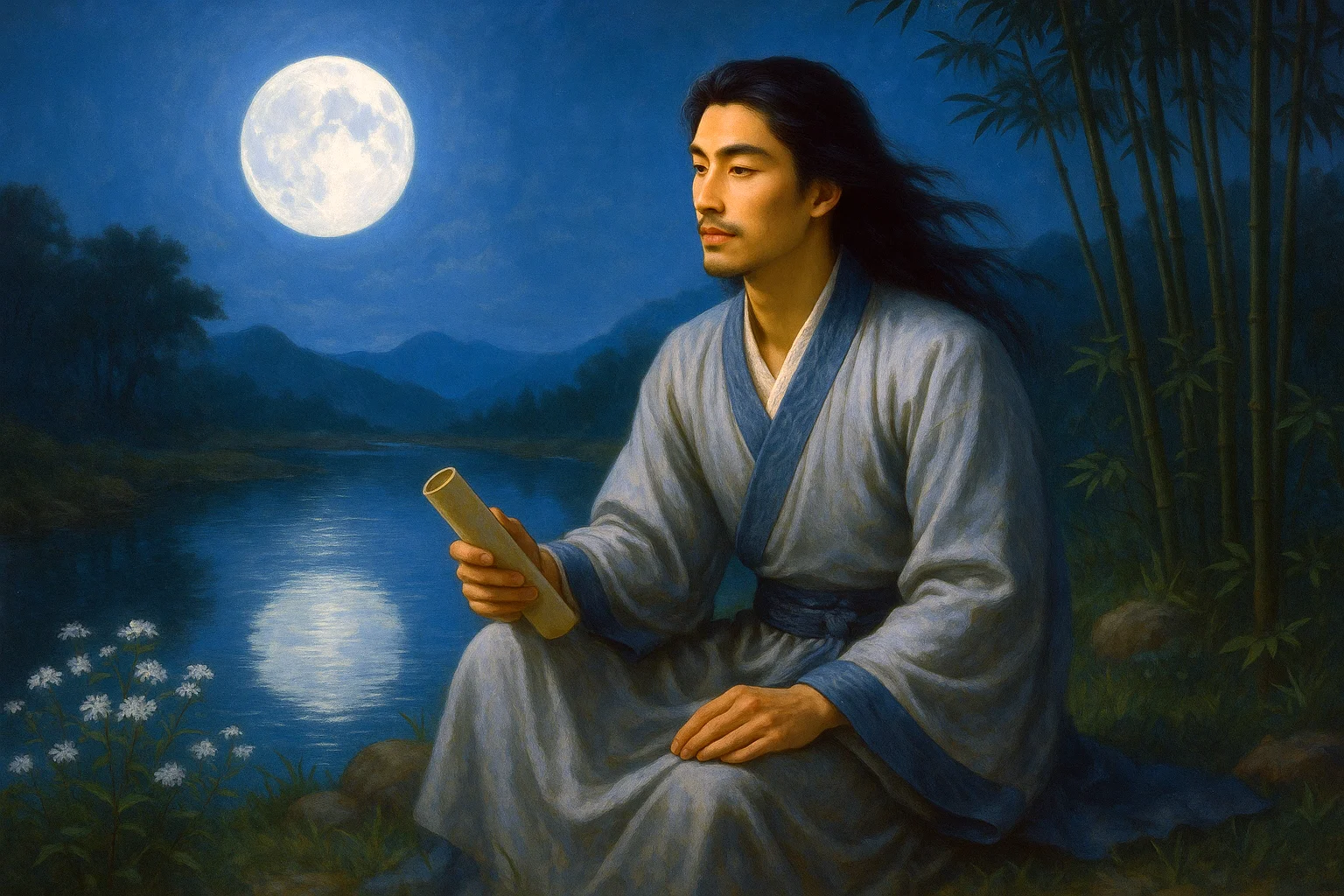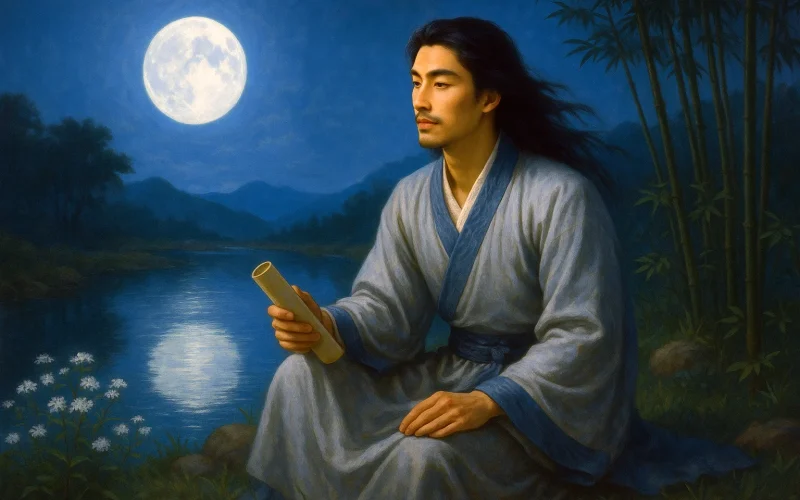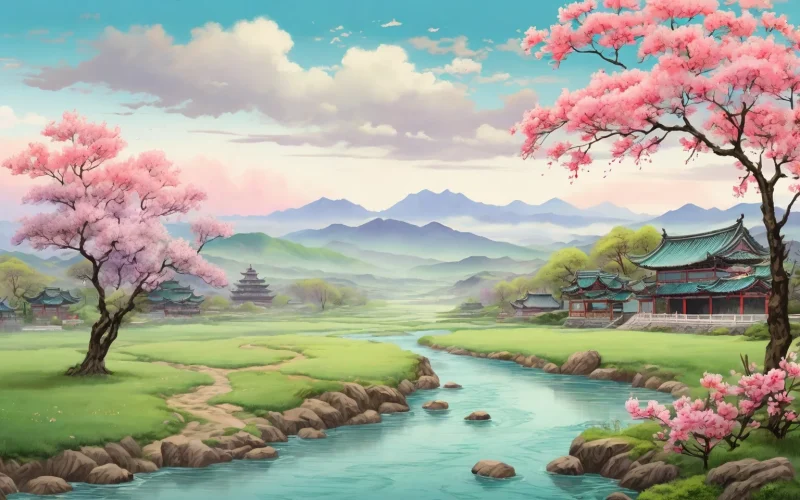Twigs still pale with newborn hue,
Drunk on east wind, swagger through.
Daring fluff to dim the skies—
Know you not frost's chastening lies?
Original Poem
「咏柳」
曾巩
乱条犹未变初黄,倚得东风势便狂。
解把飞花蒙日月,不知天地有清霜。
Interpretation
Composed in spring 1072 during Zeng Gong's tenure as prefect of Qizhou, this work reflects his measured optimism about Northern Song political reforms. Known for his temperate governance essays, Zeng articulates in Memorial When Transferred to Cangzhou: "Our enduring peace surpasses even the Three Dynasties' golden age." While ostensibly depicting spring willows, the poem satirizes political opportunists—those who, like pliant branches, twist with prevailing winds. Beneath its botanical imagery lies a trenchant critique of power's ephemeral nature.
First Couplet: "乱条犹未变初黄,倚得东风势便狂。"
Luàn tiáo yóu wèi biàn chū huáng, yǐ dé dōngfēng shì biàn kuáng.
Tangles of twigs, still pale with winter's pallor, / flail wild the moment east winds grant them favor.
The "tangles of twigs" (乱条) symbolize uncultivated upstarts, their premature arrogance ("flail wild") revealing inherent weakness. "East winds" (东风) allegorize imperial patronage—here abused by those who mistake seasonal favor for enduring power.
Second Couplet: "解把飞花蒙日月,不知天地有清霜。"
Jiě bǎ fēihuā méng rìyuè, bùzhī tiāndì yǒu qīng shuāng.
They cast their down to blot out sun and moon, / blind to heaven's hoarfrost that comes soon.
The willow catkins' (飞花) ephemeral blizzard represents political smokescreens. Yet the cosmic inevitability of "heaven's hoarfrost" (清霜) asserts immutable justice—a rebuke to those who forget winter follows spring. The couplet's thermal contrast (blotting heat vs. cleansing cold) mirrors Confucian cyclical historiography.
Holistic Appreciation
Zeng Gong's "Ode to the Willow" is a classic example of using objects to satirize society, where the depiction of spring willows "running wild at first sprouting" serves as a metaphor for petty officials and power-hungry ministers who become arrogant the moment they gain influence. Comprising just four lines, the poem is tightly structured yet rich in meaning—superficially a nature poem, but at its core, a sharp critique. Lines like "Leaning on the east wind, it grows wild" and "Unaware that heaven and earth hold frost" create a deliberate contrast, first elevating then deflating, first mocking then warning, embodying the poet's cool yet incisive perspective on reality.
The poem is meticulously structured, transitioning seamlessly from scenery to allegory, from exuberance to decline, from arrogance to caution. It reflects both the intellectual's wisdom in satirizing reality and the upright integrity of one who refuses to flatter those in power despite being part of the court. This fusion of natural imagery and human nature, using the natural world to critique society, is rare among Zeng Gong's works and stands as a highly representative piece.
Artistic Merits
- Nature as Human Allegory, Piercing Satire
The poem uses the willow's springtime arrogance to symbolize the rampant behavior of petty men newly elevated to power, embedding its critique within an ode, striking to the core. - Balanced Structure, Subtle Language
The four lines are rigorously parallel, creating a cohesive flow. Lines like "It scatters flying catkins to blot out sun and moon" and "Unaware that heaven and earth hold frost" blend vivid imagery with philosophical depth. - A Warning in Closing, Resonant and Potent
The final line, "Unaware that heaven and earth hold frost," serves as the poem's climax, warning that arrogance will inevitably meet cosmic retribution—a jolting, thought-provoking conclusion.
Insights
This is not merely a lyrical nature poem but a politically charged satire with profound implications. It reminds us that those who grow wild with borrowed power and obscure truth with falsehood will ultimately be subdued by the "frost" of justice. Only those who remain grounded and true to themselves can withstand the test of time. In modern society, we should remain vigilant against the temptations of power and the inflation of arrogance, holding fast to integrity and clarity. Though brief, this poem contains deep insight, exemplifying the art of using objects to convey truth and express ideals.
About the Poet

Zeng Gong (曾巩, 1019 - 1083), a native of Nanfeng in Jiangxi province, stands among the illustrious "Eight Great Masters of Tang-Song Prose." His writings distinguished themselves through an elegant classical balance, celebrated for their rigorous argumentation and refined literary craftsmanship. While his poetry embraced an artless subtlety, his prose achieved what critics hailed as "the very essence of purity" - an achievement that, though perhaps less dazzling than his contemporaries like Su Shi or Wang Anshi, earned him posthumous reverence as the founding master of the "Nanfeng Literary School."












